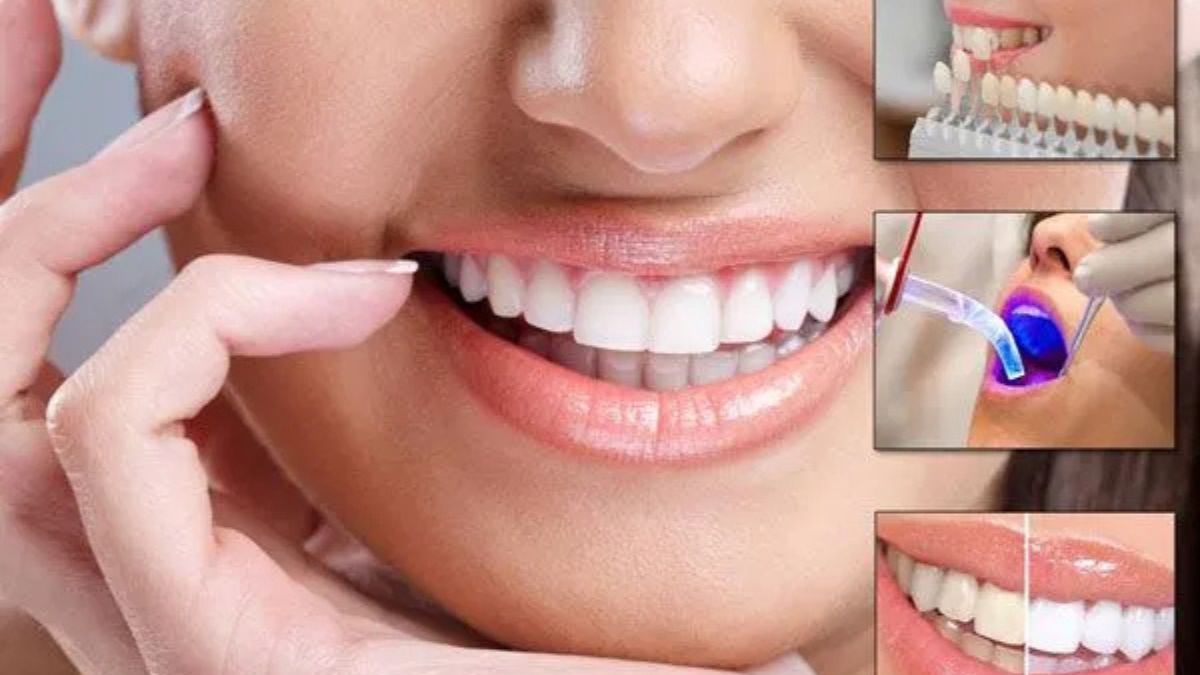A beautiful smile can change everything—from your confidence in social situations to your success in professional settings. If you’ve been hiding your smile or feeling self-conscious about your teeth, a Dental makeover might be the life-changing solution you’ve been seeking.
Dental makeovers combine multiple cosmetic and restorative procedures to address various dental concerns simultaneously. Whether you’re dealing with discolored teeth, gaps, chips, or more complex issues, modern dentistry offers comprehensive solutions that can dramatically transform your appearance and oral health.
This guide explores everything you need to know about dental makeovers, from understanding your options to planning your transformation journey. You’ll discover how different procedures work together to create stunning results and learn what to expect throughout the process.
What Is a Dental Makeover?
A dental makeover is a customized treatment plan that combines multiple dental procedures to improve both the appearance and function of your teeth. Unlike single treatments that address isolated issues, makeovers take a comprehensive approach to transform your entire smile.
The process typically involves collaboration between general dentists, cosmetic specialists, and sometimes orthodontists or oral surgeons. This team approach ensures that all aspects of your oral health are considered while achieving your aesthetic goals.
Dental makeovers can range from conservative treatments using whitening and bonding to extensive reconstructions involving multiple implants, crowns, and veneers. The specific combination depends on your individual needs, goals, and budget.
Common Dental Issues Addressed
Discoloration and Staining
Years of coffee, wine, or tobacco use can leave teeth severely stained or discolored. Professional whitening treatments can lighten teeth several shades, while veneers or crowns can address deeper stains that don’t respond to bleaching.
Intrinsic stains caused by medications or dental trauma often require more advanced solutions like porcelain veneers or crowns to achieve uniform color results.
Gaps and Spacing Issues
Spaces between teeth can be closed using orthodontic treatment, dental bonding, or veneers. The best approach depends on the size and location of gaps, as well as your overall treatment timeline preferences.
Orthodontic solutions provide the most conservative approach by moving natural teeth into proper positions, while veneers offer faster results by covering gaps with custom-designed porcelain shells.
Chips, Cracks, and Worn Teeth
Damaged or worn teeth can be restored using various methods including dental bonding, crowns, or veneers. The extent of damage determines which restoration option provides the best long-term results.
Severe wear from teeth grinding may require full mouth reconstruction using crowns or overlays to restore proper bite function along with aesthetic improvements.
Missing Teeth
Dental implants, bridges, or dentures can replace missing teeth while maintaining facial structure and bite function. Implants offer the most natural-looking and durable solution for single or multiple tooth replacement.
The choice between replacement options depends on bone density, adjacent tooth health, budget considerations, and treatment timeline preferences.
Popular Dental Makeover Procedures
Professional Teeth Whitening
Professional whitening delivers dramatically better results than over-the-counter products. In-office treatments can lighten teeth up to eight shades in a single session, while custom take-home trays provide gradual whitening with professional-strength gel.
Whitening often serves as the foundation for makeover treatments, establishing the desired tooth shade before other restorations are designed and fabricated.
Porcelain Veneers
Veneers are ultra-thin porcelain shells bonded to the front surfaces of teeth. They can simultaneously address multiple cosmetic issues including discoloration, chips, gaps, and minor misalignment.
The procedure typically requires two visits—one for preparation and impressions, another for bonding the custom veneers. Results last 10-15 years with proper care and maintenance.
Dental Crowns
Crowns completely cover damaged or heavily restored teeth, providing both strength and improved appearance. Modern all-ceramic crowns look completely natural while offering excellent durability.
Crown procedures usually require two appointments, with temporary crowns protecting prepared teeth between visits. The final crowns are cemented permanently once fit and appearance are verified.
Orthodontic Treatment
Clear aligners like Invisalign can straighten teeth discretely as part of comprehensive makeover plans. Treatment typically takes 6-18 months depending on the complexity of movement required.
Traditional braces may be recommended for severe alignment issues or when more precise tooth movement is needed to achieve optimal results.
Dental Implants
Implants replace missing tooth roots with titanium posts that integrate with jawbone tissue. Crown restorations attached to implants look and function like natural teeth.
The implant process takes several months to complete, allowing time for osseointegration before final crown placement. Success rates exceed 95% when proper candidacy criteria are met.
Planning Your Dental Makeover
Initial Consultation and Assessment
Comprehensive examination includes digital X-rays, photographs, and impressions to document current conditions. Your dentist will discuss concerns, goals, and expectations to develop an appropriate treatment plan.
Many practices use digital smile design technology to show potential results before treatment begins. This preview helps ensure your expectations align with achievable outcomes.
Treatment Sequencing
Procedures must be completed in proper order for optimal results. Orthodontic movement typically occurs first, followed by restorative work like crowns or veneers designed to fit the new tooth positions.
Your dentist will provide a detailed timeline showing when each procedure will be completed and how treatments coordinate with each other.
Budget and Financing Considerations
Dental makeovers represent significant investments, often ranging from several thousand to tens of thousands of dollars depending on complexity. Many practices offer financing options to make treatments more accessible.
Dental insurance may cover portions of restorative procedures but typically excludes purely cosmetic treatments. Review your benefits and explore payment plan options during consultation.
What to Expect During Treatment
Temporary Restorations
Many procedures require temporary crowns, veneers, or other restorations while permanent work is being fabricated. These temporaries protect prepared teeth and maintain function during treatment.
Temporary restorations may feel different and require gentle care. Avoid sticky or hard foods that could dislodge temporaries between appointments.
Adjustment Period
New restorations often require minor adjustments to achieve comfortable bite and optimal function. Don’t hesitate to contact your dentist if anything feels uncomfortable or unusual.
Your mouth needs time to adapt to changes, especially with extensive makeovers. Most patients adjust completely within a few weeks of final restoration placement.
Recovery and Healing
Some procedures involve healing periods where specific care instructions must be followed. Implant integration takes several months, while soft tissue healing from other procedures typically occurs within days to weeks.
Follow all post-operative instructions carefully to ensure optimal healing and long-term success of your makeover investment.
Maintaining Your New Smile
Daily Oral Hygiene
Excellent home care protects your investment and ensures long-lasting results. Brush twice daily with fluoride toothpaste and floss regularly to prevent decay and gum disease around restorations.
Consider using a soft-bristled toothbrush and non-abrasive toothpaste to avoid scratching porcelain surfaces. Your dentist may recommend specific products for maintaining restorative materials.
Regular Professional Care
Professional cleanings and examinations every six months help identify potential issues before they become serious problems. Your dental team can provide specialized cleaning techniques for different restoration materials.
Regular check-ups allow for early intervention if adjustments or repairs become necessary, protecting both your oral health and aesthetic investment.
Lifestyle Considerations
Avoid habits that could damage restorations like chewing ice, using teeth as tools, or grinding/clenching. A custom nightguard may be recommended if you have bruxism tendencies.
Limit staining substances like coffee, tea, and red wine, especially immediately after whitening treatments or new restoration placement.
Achieving Your Dream Smile
A dental makeover can provide the confident, beautiful smile you’ve always wanted while improving your oral health and function. The key to success lies in working with experienced professionals who understand both the art and science of comprehensive smile design.
Take time to research potential providers, ask questions about their experience with makeover cases, and review before-and-after photos of similar treatments. The right dental team will listen to your concerns, explain all options clearly, and work with you to achieve results that exceed your expectations.
Your investment in a dental makeover extends far beyond improved appearance—it’s an investment in your confidence, health, and quality of life. With proper planning, skilled treatment, and committed maintenance, your new smile will provide decades of satisfaction nd enhanced well-being.











